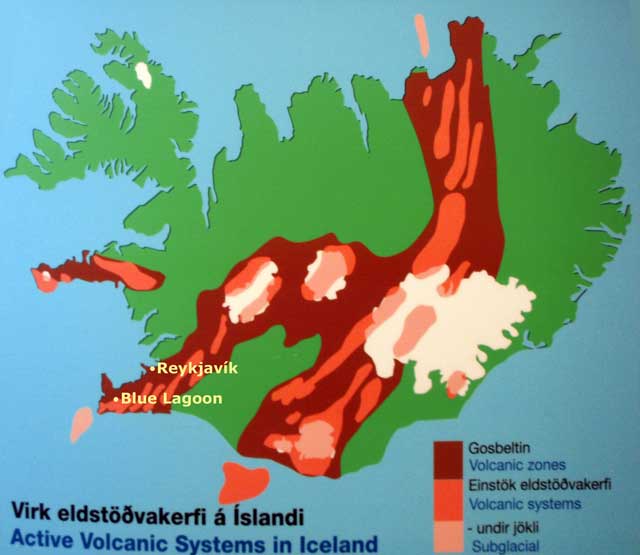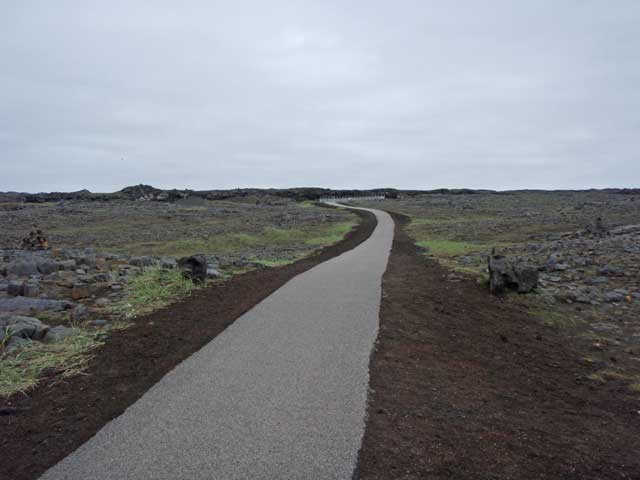
The walkway that appeared to lead to nowhere.

I woke up about an hour ago, and despite several games of sudoku, I still can’t get to sleep. The moderate twilight that passes for nighttime at these latitudes isn’t helping either, although I think the biggest culprit is that the room is too warm. Judging by the steady snores, Jonathan is deep in the sleep of exhaustion, as he got no sleep the two previous nights running. I’ve cracked open the window to let in some air to freshen the stuffy warmth. So in the meantime, I browsed the previous day’s pictures, and would like to catch up on the journal before our planned departure at 0800.
The flight into Keflavik was uneventful and not too long, about four and a half hours. The airport sits on a peninsula southwest of the capital on a wind-swept flatland. (I suspect that I’m going to be using that word - windswept - frequently.) We briefly met John H. on the plane - he sat directly behind us, while Diane H. was across the aisle.
Kristín collected us outside of customs where in addition to John, Diane, and Paul, we were joined by Margie V. and Shirley C. The main goal of the morning was the Blue Lagoon, but as our flight had arrived at ~0645, and the Lagoon doesn’t open until 0900, we had some time for the scenic route.
After loading our bags into the trailer, we boarded our medium sized bus, and headed southward along the coast. We passed the remnants of the old US army base now taken over by a local university that uses the housing for dormitories. Jonathan commented that the landscape between Keflavik and Reykjavik was a moonscape, and the region we drove through met that description. Kristín pointed out that the land we were passing was very young geologically and the elements had not yet worn the surface down to create topsoil. Most of the vegetation in the area was moss, lichens, and small grasses. Also present were many patches of lupine - an import from Alaska. Being a legume, the lupine fixes nitrogen and builds the soil, although Kristín reported that there was concern in some environmental quarters that it might dislodge some native species. So amid the moonscape, there were occasional sweeps of purple where the lupine was established.
Along the westward facing shore, we stopped at the rift, where it comes ashore. The “rift” is a remarkably brief word at odds with the magnitude of the phenomenon it describes. This is the location where the North American and Eurasian tectonic plates separate from each other moving in the opposite directions (about one inch per year at this location). Most of the rift lies under the Atlantic Ocean as the mid-Atlantic ridge, but it makes landfall in Iceland resulting in a landscape that is decorated with volcanic and geothermal sites.
The place we stopped looked like it was in the middle of nowhere - a road to a parking lot and a paved trail into the barren topography. However there was a small pedestrian bridge over a modest sized ravine. That ravine turned out to be a rift valley and the bridge technically spans two continents.
From the rift we headed on to one of those geothermal sites, the Blue Lagoon. The Blue Lagoon is actually a man-made attraction that arose from the geothermal electric plant. The spent hot water was pumped into these lagoons as waste, however the workers at the plant enjoyed bathing and swimming in the warm water. They also found that the high mineral content was beneficial in treating psoriasis and other skin conditions. So the site has a very nice spa and restaurant. We still arrived before the the lagoon itself opened for swimming and bathing, but the coffee shop was open so Jonathan and I were able to grab some breakfast as non had been provided on the flight.
The water in the lagoon is milky white with a blue tint - visibility into the water is only an inch or so. Although the lagoon was created in a lava field the bottom is sandy and frequently feels like a smooth glass surface. The reason for that occasional smoothness is visible around the water’s edge where the white silicates have precipitated on the black stone of the lava. The depth of water varied but was never over my head - and it was usually about half that.
We lounged in the warm water for an hour or so - I chose to forego smearing my face with the silica paste that has such restorative powers. We boarded the bus to head to Reykjavik along with four additional walkers who had joined us for our dip into the Blue Lagoon - Ronnie D, Kevin B, Gisele C, and Jerye M. As we drove into Reykjavík, the landscape transitioned abruptly from moonscape to green.
After checking into the hotel, and getting our assortment of battery chargers set up, we walked through Reykjavík with our guides Kristín and Erling pointing out sites of interest. This tour was interrupted by lunch featuring a sampler of Icelandic cuisine - fish casserole, smoked lamb, and fresh fish.
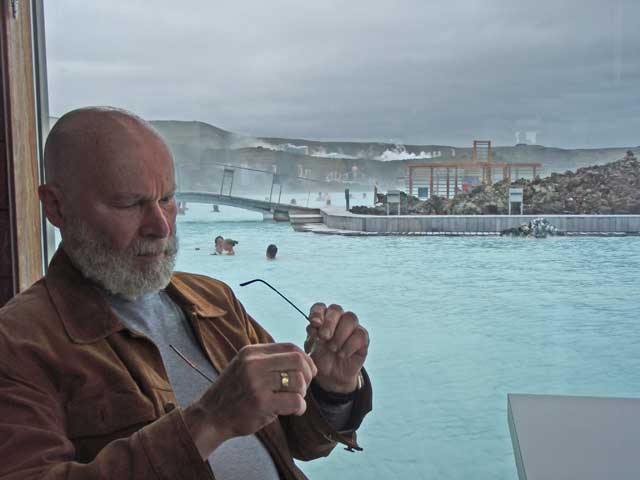
After taking our dip, wereconvened in the coffee shop. The structure in the middle distance is a swim-up bar.
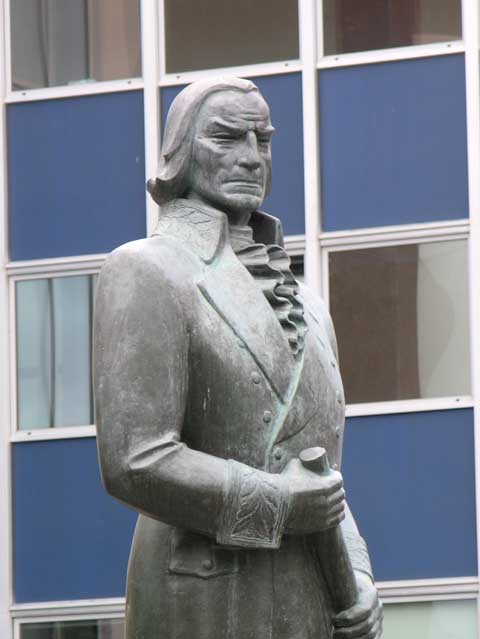
I forget who this stern faced fellow is, but the sculptor gave him a scowl worthy of biting into a lemon.
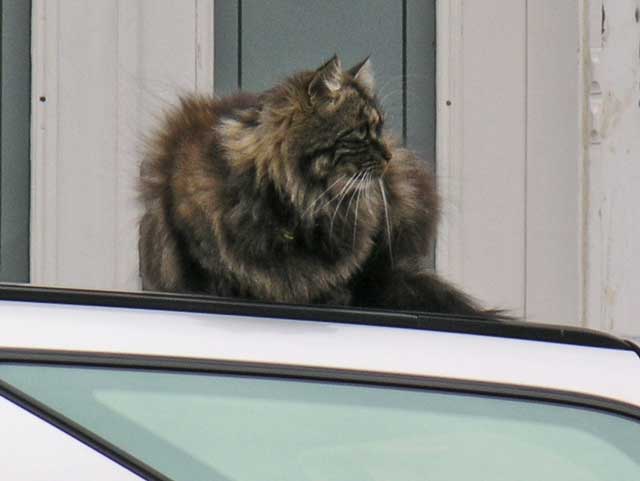
A local feline - taken with a sense of melancholy, as we had lost one of ours, Argo, the week before (*sniff*).
After lunch we walked to the top of the hill where the new Hallgrímskirkja church is located. It’s an impressive modern work in concrete that seems appropriately designed in this northern environment. The interior is well lit by windows with little stained glass. From there we walked back down the hill to city hall, which is situated on (and perhaps half in) the pond. There is a parliament of waterfowl on the pond with seagulls, ducks of various types, geese, and swans. Inside, there is a large topographical map of the island that Erling used to describe the upcoming tour. After leading us back to the hotel, we were on our own for dinner.
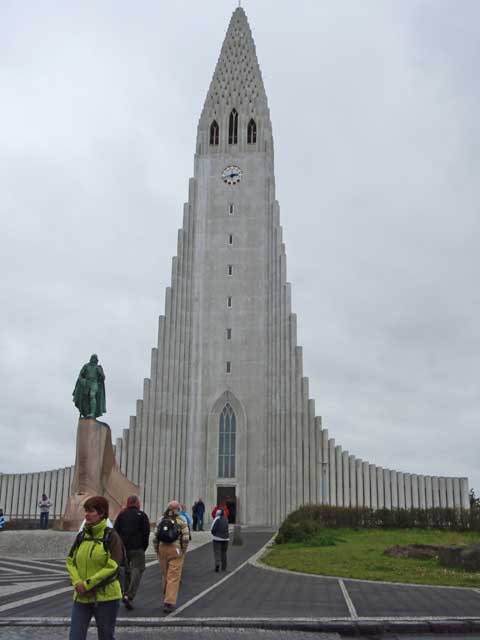
Hallgrímskrkja - the external motifs were taken from the Icelandic landscape. The statue in front is Leif Erikson.
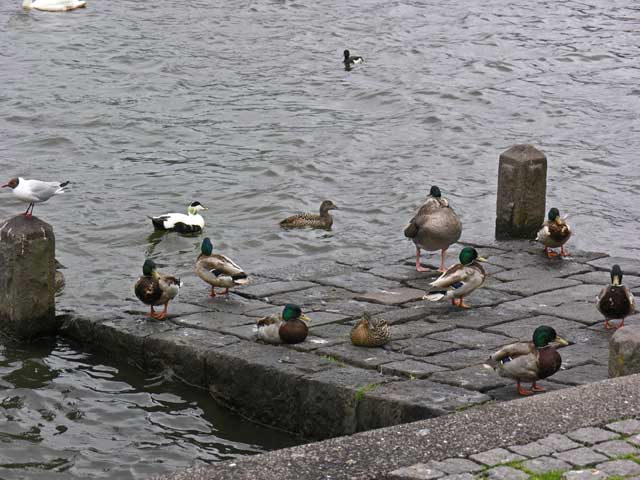
A sampler - arctic tern, eider duck (the black and white one on the water) mallards, a goose, and a swan (at top).
One of the restaurants Kristín recommended was the Fish Company (Fiskfélagið), which was located in the basement of a building less than a five minute walk from the hotel. The curtains were “sweaters” of knitted wool in the dimensions of the window, and the tie-backs were in the shape of two arms of a sweater. I had an appetizer of pork belly with gnocchi, spicy chorizo, and potatoes with a black olive puree, followed by a slow cooked salmon with an Asian inspired sauce reminiscent of teriyaki accompanied by corn in three forms - meal, kernel, and popped. The portions were generous and I wish we had shared or skipped the appetizer as I couldn’t finish the salmon which was very good. I commented to Jonathan that the chef was obviously being creative, but I found the output a bit “fussy”. Also, I don’t get “foam” on the dinner plate – it has got to be the silliest culinary trend going today.
